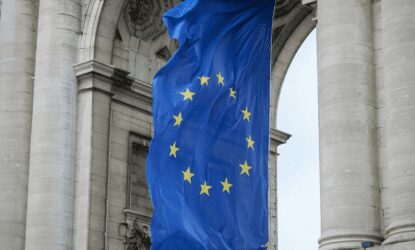 Leading ESG consultants for mid-market companies
Leading ESG consultants for mid-market companies
“Climate resilience is not just about mitigating risks; it’s about unlocking opportunities for sustainable growth.”
The urgency of climate action in 2025
As we move further into 2025, the urgency of addressing climate change becomes ever more apparent. The scientific evidence is overwhelming, and the impacts of climate change – from extreme weather events to rising sea levels – are increasingly visible and disruptive. Businesses are no longer operating in a world where environmental concerns can be sidelined. They are now central to long-term value creation and risk management.
Stakeholders – including investors, customers, employees, and regulators – are intensifying their scrutiny of corporate environmental performance. Investors are increasingly incorporating ESG factors into their investment decisions, demanding greater transparency and accountability on climate-related issues. Customers are showing a growing preference for sustainable products and services, rewarding companies that demonstrate a genuine commitment to environmental stewardship. Employees, particularly younger generations, are seeking to work for organisations that align with their values and contribute to a sustainable future.
Against this backdrop, governments worldwide are enacting stricter environmental regulations, including carbon pricing mechanisms, emissions standards, and mandatory climate-related disclosures.
6 steps to build a climate-resilient ESG strategy
In today’s rapidly changing environment, developing a climate resilient ESG strategy is essential for industries looking to thrive sustainably. Nexio Projects, a top sustainability consultancy based in Rotterdam, works with companies across sectors such as manufacturing, shipping, and consumer goods to embed resilience into their sustainability for business initiatives. Our sustainability consultants bring deep expertise in environmental, social, and governance consulting to help organisations anticipate risks, seize opportunities, and align with evolving regulatory frameworks. With over 400 clients and 1,000 projects worldwide, we guide your business towards long-term climate resilience.
The world is at a critical juncture where businesses must adapt to the realities of climate change and meet growing demands for transparency in their sustainability practices. Navigating the complexities of environmental regulations and achieving meaningful progress can be overwhelming without a clear roadmap. Therefore, let’s go through a 6-step process to build a climate-resilient ESG framework that aligns with global goals while driving business value.
Step 1: Set climate governance
Effective climate governance is the cornerstone of a successful ESG strategy. It involves establishing clear roles, responsibilities, and decision-making frameworks to oversee climate-related initiatives. This step ensures that sustainability is embedded at every level of the organization. Without robust governance, climate strategies risk being fragmented and ineffective. Governance creates accountability and fosters collaboration across departments.
Examples on how to implement:
- Establish leadership in sustainability by forming a dedicated sustainability committee or appointing a Chief Sustainability Officer (CSO).
- Integrate climate considerations into board-level discussions and decisions.
- Develop policies that align with international standards like the Task Force on Climate-related Financial Disclosures (TCFD).
Our insight:
Governance frameworks should be tailored to the organisation’s maturity level. For example, companies new to ESG planning may start with basic compliance structures. More advanced organisations can focus on embedding sustainability kpis into core business strategies. Learn more about governance integration here.
Step 2: Develop a GHG emissions inventory
A greenhouse gas (GHG) emissions inventory is the foundation for understanding your organization’s environmental impact. This step involves the question of how to measure carbon emissions across Scopes 1, 2, and 3 to identify hotspots and prioritize reduction efforts. You can’t manage what you don’t measure. A GHG inventory provides critical insights into where emissions are concentrated—whether in operations, supply chains, or product lifecycles.
Examples on to implement:
- Use tools like Life Cycle Assessments (LCA) to analyse emissions across your value chain.
- Collaborate with suppliers to gather accurate Scope 3 data.
- Regularly update your inventory to reflect changes in operations or partnerships.
Our insight:
Organisations often underestimate Scope 3 emissions, which can account for most of their footprint. Nexio Projects helps businesses navigate this complexity by providing tailored solutions for emissions tracking and reporting. Explore more here.
The most challenging step in the decarbonisation strategy can vary depending on the organisation. We support customers across the entire decarbonisation journey from baseline to engagement. Examples of key questions to ask yourself could be “What are the hotspots?”, “What are the priorities?” and ‘What are net-zero sustainability levers?”.
Step 3: Set Science-Based Targets
Science-based targets (SBTs) ensure that your emissions reduction goals are aligned with global climate benchmarks, such as limiting warming to 1.5°C above pre-industrial levels. SBTs provide credibility and transparency, demonstrating your commitment to meaningful climate action.
Examples on to implement:
- Commit to the Science-Based Targets Initiative (SBTi).
- Define reduction pathways based on industry-specific benchmarks.
- Submit targets for validation by SBTi to ensure compliance with best practices.
Our insight:
Setting interim milestones alongside long-term targets helps organizations track progress effectively while adapting strategies as needed. Learn more about SBTi validation here.
Step 4: Create a decarbonisation plan
A decarbonisation plan outlines specific actions needed to achieve net-zero goals. This roadmap integrates sustainability into business strategies while addressing technical and financial feasibility. A clear plan ensures that resources are allocated efficiently, and progress is measurable.
Examples on to implement:
- Identify key levers such as transitioning to renewable energy or enhancing energy efficiency.
- Collaborate with stakeholders across the supply chain to drive systemic change.
- Use scenario modeling to test the impact of different interventions.
Our insight:
Decarbonisation plans should be dynamic, allowing for adjustments based on emerging technologies or regulatory changes. Nexio Projects provides tools for creating actionable roadmaps tailored to your industry. Discover more here.
Step 5: Develop a climate risk assessment
Assessing climate risks enables organisations to identify vulnerabilities and implement measures that enhance resilience against physical and transitional risks. Climate risks can disrupt operations, supply chains, and financial performance if left unaddressed.
Examples on how to implement:
- Conduct scenario analyses based on potential climate impacts (e.g., extreme weather events).
- Evaluate risks across short-, medium-, and long-term horizons.
- Integrate findings into enterprise risk management systems.
Our insight:
Risk assessments should consider both direct impacts (e.g., flooding) and indirect impacts (e.g., regulatory shifts). Nexio Projects helps businesses develop comprehensive risk management strategies aligned with TCFD recommendations. Learn more here.
Step 6: Develop a monitoring strategy
Monitoring progress ensures accountability and facilitates continuous improvement in achieving ESG goals. This step involves establishing systems for tracking key performance indicators (KPIs) related to sustainability. Transparent reporting builds trust among stakeholders and demonstrates commitment to long-term objectives.
Examples on how to implement:
- Select KPIs based on materiality assessments and benchmark against industry standards.
- Use centralised platforms like Position Green for data collection and analysis.
- Regularly review KPIs and adjust targets as necessary.
Our Insight:
Effective monitoring systems streamline reporting processes while enhancing data accuracy. Nexio Projects supports businesses in implementing tailored KPI frameworks that align with CSRD requirements. Explore more here.
Case study: Unilever’s holistic approach to climate resilience
Unilever stands out as a leader in embedding climate resilience into its operations and value chain. The company has established strong institutional arrangements that serve as a solid foundation for implementing its climate strategy. A key component is Unilever’s robust Climate Transition Action Plan (CTAP), demonstrating meticulous planning and a strategic approach to decarbonisation.
Setting a Net Zero ambition across its entire value chain by 2039, Unilever goes beyond its direct operations. A best-in-class supplier engagement program, which includes education and access to tools, ensures that its suppliers are aligned with its sustainability goals. Furthermore, Unilever is actively reformulating products towards lower GHG emissions and increased use of plant-based ingredients.
Their commitment extends to sustainable agriculture practices and a sharp focus on reducing emissions related to raw materials, logistics, and sustainable packaging. As illustrated by their Scope 3 GHG reduction plan, Unilever’s comprehensive strategy showcases a deep commitment to addressing climate change across its entire ecosystem
Future impact: The path ahead for businesses
Looking ahead to 2025 and beyond, businesses must act decisively to stay ahead of regulatory changes while addressing stakeholder expectations. Developing a climate-resilient ESG strategy is no longer optional—it’s essential for long-term success. Watch our on-demand webinar where our expert dives deeper into each step of the climate strategy and provides a stakeholder engagement guide.
Building a climate-resilient ESG strategy requires an integrated approach combining governance, measurement, planning, risk management, and monitoring. By leveraging Nexio Projects’ expertise, organisations can navigate this journey confidently while aligning with global sustainability goals. See how we can help with your decarbonisation journey here.
Watch the first episode of our video series on building out your climate strategy to unlock further practical actions.
Ready to future-proof your business? Contact Nexio Projects today and get the right tools for your decarbonisation roadmap! Join our newsletter for insights on climate-resilient ESG strategies.
Frequently asked questions
What does it mean to build a climate-resilient ESG strategy?
A: A climate-resilient ESG strategy anticipates and adapts to climate risks, aligns governance and operations with sustainability goals, and integrates resilience across business units to ensure long-term viability in a changing environment.
What key steps should an organisation take to create a 2025-ready ESG strategy?
Key steps include conducting a climate risk and opportunity assessment, engaging leadership and stakeholders, embedding the strategy into business planning, setting measurable targets, and aligning with global standards such as TCFD or SASB.
How can companies embed resilience into their ESG governance frameworks?
They can establish accountable leadership roles (e.g., Chief Sustainability Officer), integrate sustainability KPIs into performance reviews, and include climate risk oversight in the board’s charter and audit committee responsibilities.
Which metrics are essential for tracking progress in a climate-resilient ESG strategy?
Essential metrics include GHG emissions (Scopes 1–3), climate-related financial risk exposures, resource efficiency, supply-chain interruption frequencies, and climate adaptation investments.
Why is now the right time for companies to refresh their ESG strategy for 2025?
With regulatory shifts, investor expectations accelerating, and operational risks from climate increasingly materialising, companies must act now to stay ahead of compliance deadlines, safeguard value, and increase competitive resilience.
Sources
- Unilever (2024) Our Climate Transition Action Plan. Available at: https://www.unilever.com/sustainability/climate/our-climate-transition-action-plan/ (Accessed: 31 March 2025).
- Unilever (2024) Why we’ve updated our Climate Transition Action Plan. Available at: https://www.unilever.com/news/news-search/2024/why-weve-updated-our-climate-transition-action-plan/ (Accessed: 31 March 2025).
- European Commission (2024) Corporate Sustainability Reporting Directive (CSRD). Available at: https://finance.ec.europa.eu/capital-markets-union-and-financial-markets/company-reporting-and-auditing/company-reporting/corporate-sustainability-reporting_en (Accessed: 31 March 2025).
- FCM Travel (2024) Corporate Sustainability Reporting Directive (CSRD) Explained. Available at: https://www.fcmtravel.com/en-us/resources/insights/corporate-sustainability-reporting-directive (Accessed: 31 March 2025).
- Normative (2024) CSRD Explained: What businesses need to know. Available at: https://normative.io/insight/csrd-explained/ (Accessed: 31 March 2025).











